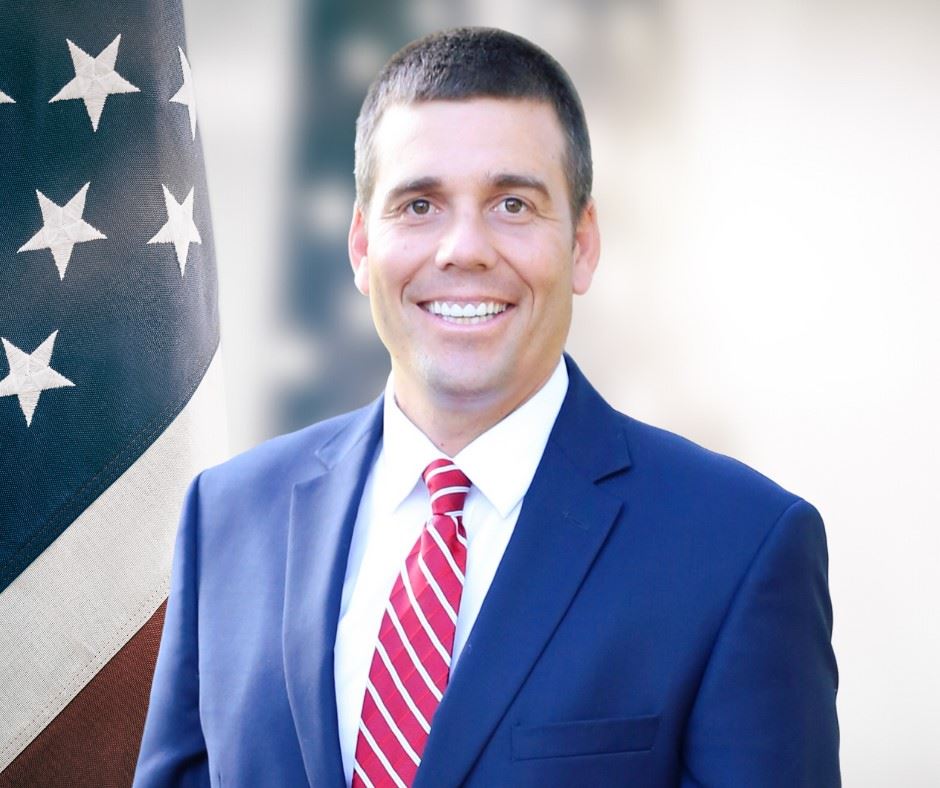
Santa Rosa County Commissioners have reversed course on proposed changes to reduce protections in the county’s well field protection area (WFPA), which supplies potable water for all of South Santa Rosa County.
The board on December 10 had voted to pursue changing the county’s comprehensive plan to allow the expansion of borrow pits within the WFPA. But following public outcry and a directive by the Northwest Florida Water Management District (NWFWMD) to gather more data, the board’s 6 p.m. rezoning meeting agenda shows commissioners plan to deny moving forward with those changes.
Additionally, District 3 Commissioner James Calkins, who had developed an alternative plan and received initial support from NWFWMD Executive Director Brett Cyphers, told South Santa Rosa News on Wednesday that he has no plans to move forward with any WFPA changes now.
“I hope (proposed WFPA changes) just go away now,” Calkins said. “I can’t control what other commissioners might do, but I have no plans to bring it back up.”
That’s a welcome relief to many clean water advocates and utility leaders, who had strongly opposed the changes, citing their dependence upon WPFA water due to saltwater intrusion in the south end of the county and threatening lawsuits.
The move will also allow the county to focus on a landmark project which supporters say will not only help protect the area’s water supply but also improve the local environment.
GAME CHANGER
The Regional Reuse Beneficial Strategic Plan is a joint effort by Holley-Navarre Water System, Santa Rosa County (Navarre Beach Utilities) and the City of Gulf Breeze (South Santa Rosa Utility Service).
That four-phase plan will provide infrastructure to permanently end the discharge of treated effluent into Santa Rosa Sound and expand reuse capabilities and sewer service, resulting a multitude of benefits, including:
- Less demand on the aquifer in the well field protection area;
- Improved water quality in Santa Rosa Sound;
- Increased use of reuse water for irritation and other purposes;
- Abatement of septic systems.
Currently around 1,200 taps on Santa Rosa Island are connected to the Navarre Beach Wastewater Treatment Plant, which discharges from 200,000-600,000 gallons of treated effluent into Santa Rosa Sound each day – with peak use during summer.
Although testing is done to ensure the discharge falls within the required Florida Department of Environmental Protection (FDEP) permit standards, those parameters allow for the release of up to 25,000 pounds of nitrogen and 14,000 pounds of substrates, solids and phosphorous annually.
The FDEP in the 1990s labeled the waterway as “impaired” and in need of restoration, as per Federal Clean Water Act standards. At that time, only 30 percent remained of 10,000 acres of seagrass previously surveyed in the 1960s.
Also, South Santa Rosa County was designated as an FDEP Water Resource Concern Area due to impending water supply issues.
So utility company leaders started developing a plan to stop discharging effluent into the Sound by pursuing a Rapid Infiltration Basin (RIB) System on Eglin Air Force Base property, located on 200 acres just north of Holley. The facility will be able to handle 1.5 million gallons daily and eventually 5.6 MGD.
Eglin approved the RIB concept in 2001, and FDEP gave the nod for related permitting in 2005. But The Great Recession in 2008 slowed the economy and demand for new housing.
However, the housing market in Navarre rebounded, and countywide housing development now averages 2.8 percent.
That growth will push Holley-Navarre Water System to face capacity in November 2022, sparking a renewed need to address the wastewater issues to avert a crisis.
HNWS and Santa Rosa County in 2019 formally partnered and teamed up shortly thereafter with the City of Gulf Breeze, eventually creating the South Santa Rosa County Beneficial Reuse Strategic Plan. The first three phases are expected to be complete by 2024 with the final phase expected in 2026.
Phase I includes construction of a transmission lines from HNWS’s Pepper Street Treatment Plant to the Eglin RIB site, where 7 cells will be constructed. Projected $10.6 million costs will be shared between local, state and federal agencies.
Phase II includes construction of transmission lines underneath Santa Rosa Sound, connecting the Navarre Beach plant to HNWS’s Pepper Street Plant and also the addition of 5 cells to the Eglin RIB system. Increased capacity to 2.4 MGD. Estimated $13.3 million costs will shared and offset by an $8.7 allocation from RESTORE funding.
Phase III will connect HNWS’s Pepper Street Plant to the City of Gulf Breeze Reclaim Transmission System, which will be expanded along U.S. 98. The City of Gulf Breeze plans to fund more than have of the nearly $5.2 million costs.
Phase IV will provide upgrades to the Navarre Beach plant, including improvements to the effluent pump station. Santa Rosa County will fund the roughly $3.7 million costs.
Calkins, former HNWS President, says significant, lasting improvements to water quality are now on the horizon with not only the South Santa Rosa Reuse Plan but also the City of Milton’s $30 million North Santa Rosa Regional Water Reclamation Facility project, which ends discharge into Blackwater River, and the City of Gulf Breeze’s expansion of its Tiger Point Wastewater Treatment Plant & Reclamation Facility, which includes septic-to-sewer conversions to rid the peninsula of septic tanks, we are poised to make significant improvements to our local water quality.
”





































